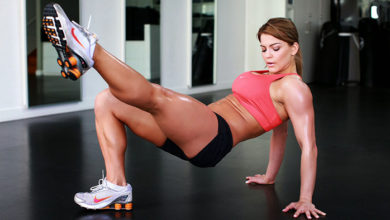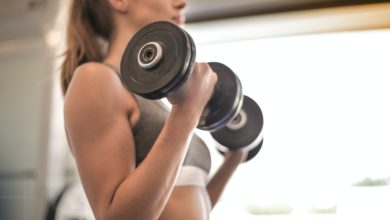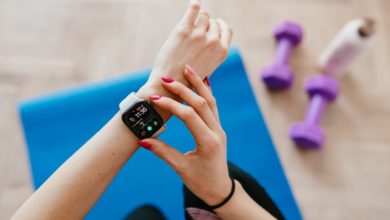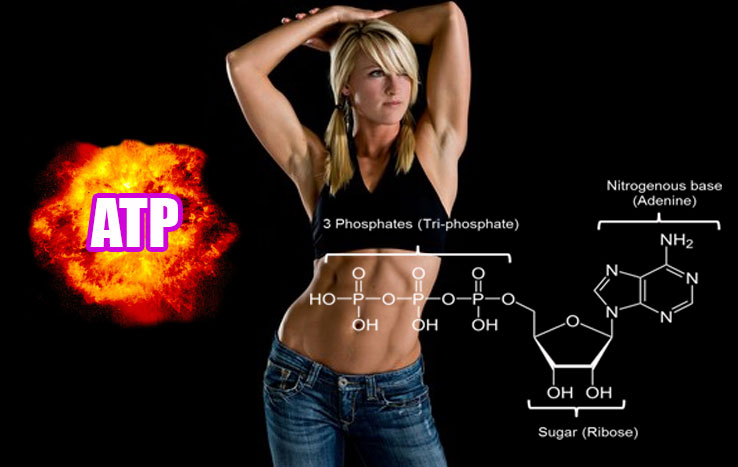
What is ATP?: A Guide for Girls
It’s a term you’ve heard in the gym and seen in fitness magazines. But what is ATP and why is it so important for exercise?
You’re a girl that’s not afraid to mix it up in the strength room. You push your body to its aesthetic and athletic max, and you’re never afraid to rise to the challenge.
Naturally, you want to understand more about how your body works.
The term ATP is one that’s been talked about in dusty old biology books for years. But as science teases its way into mainstream fitness, it’s an acronym that’s used more than ever.
In this article we tell you all about this ‘energy currency’ and why its your best friend in the gym (and also keeps you alive which is also kinda important too)…
SMG Article Preview
- The ATP and energy link
- The body’s ‘energy currency’
- Energy systems and exercise
- Do ATP supplements work?
ATP, Energy and Life
ATP is the compound needed for molecular energy transfer. Without it you wouldn’t be here.
 As you sit there right now there’s something flooding every cell of your body. No, it’s not the protein shake you just chugged… or those double gin and tonics from last night either.
As you sit there right now there’s something flooding every cell of your body. No, it’s not the protein shake you just chugged… or those double gin and tonics from last night either.
It’s an organic chemical called ATP or adenosine triphosphate.
As a nucleotide molecule, it’s made up of various chemicals. It consists of a nitrogenous base of adenine which is attached to a sugar called ribose. It then has three phosphate bonds that connect to it like a tail does from a cat.
Every single cell in your body needs ATP to survive. Not just yours even; both animals and plants use it too.
From muscle contraction and nerve transmission, to digestion and metabolism; adenosine triphosphate regulates how you use this uber-important compound.
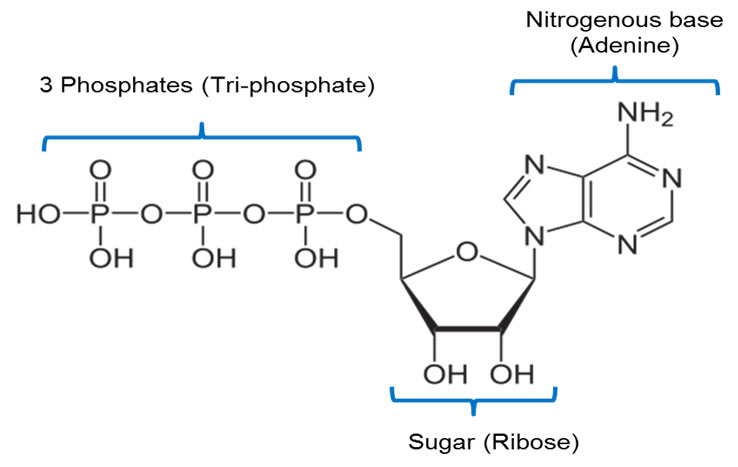
Your body’s ‘energy currency’
Adenosine triphosphate is a bit like a baseball glove. Only it doesn’t catch a hard hitter’s slog, it catches energy.
When you eat food, your body has to break down the nutrition inside it into chemical energy – what we know as calories. ATP captures this chemical energy with a home-stealing catch and ushers the calories into the cell so they can be used to power cellular and metabolic processes.
If energy was coal and muscle was the open fire, ATP is the burly dude shoveling it into the coalface.
[infobox]Key Point: ATP is the principle molecule for storing and chaperoning energy into cells.
[/infobox]How Does ATP Work?
Adenosine triphosphate regeneration is linked directly to exercise intensity. The harder the workout, the faster you need it.
There are nerdy scientists with shelves and shelves of calculations, statistics and information on cellular pathways relating to how ATP is used by the body to create energy.
The whole thing is complex and to be honest, pretty difficult to understand.
Luckily we’re just going through the basics girls.
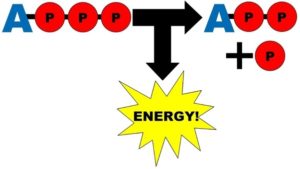
ATP is like a supercharged energy firecracker
Because of its chemical arrangement, the three phosphates that hang from an adenosine molecule are held together by high-energy bonds.
When a cell needs energy, one of those bonds is broken off.
As such, that energy bond is made available to cells in a way that’s similar to a firecracker going off – the chemical reaction from the broken bond causes a release of energy.
BANG!!
All of a sudden you power up the cell and away it goes doing what it does best.
This occurs through a process called hydrolysis (which just means breakdown of hydrogen). And it happens over and over, again and again, every second you’re alive.
Once that individual phosphate bond has broken away, you’re left with adenosine diphosphate (ADP) as you only have two phosphate bonds attached to adenosine.
And now you need to somehow find that missing phosphate, attach it back, and convert ADP back into ATP.
‘Energy systems’ help you make more ATP
Adenosine triphosphate is vital for life.
Your body only stores around 80-100 g of ATP in your body at any one time. That’s only enough for 3-4 seconds of full-intensity exercise before it’s all gone.
And if it totally runs out you die of course!
In fact, a lack of ATP means you can’t detach muscle fibers from each other. That’s why we see rigor mortis in dead bodies.
Dying isn’t cool, obviously. So your body has evolved to generate as much of the powerful compound as possible.
The following three systems can be used by your body to make more ATP.
- Phosphocreatine – this system uses creatine to make ATP very quickly, but with only a small amount of creatine stored in your muscles it can only make enough to last 8-10 seconds of intense exercise. This is why you naturally slow down after a few seconds of sprinting at max intensity.
- Anaerobic glycolysis – uses glycogen to make ATP. Because you store more glycogen in muscles than creatine, you can maintain a high(ish) intensity exercise for 60-120 seconds before you become depleted and need to slow down. This system kicks in during moderate to high intensity exercise such as fast running.
- Aerobic glycolysis – uses oxygen, glycogen and fatty acids to make ATP. This system is slow and inefficient but gives you loads of ATP. It’s used primarily during low to moderate intensity exercise such as jogging, as well as when you’re chilling out at rest.
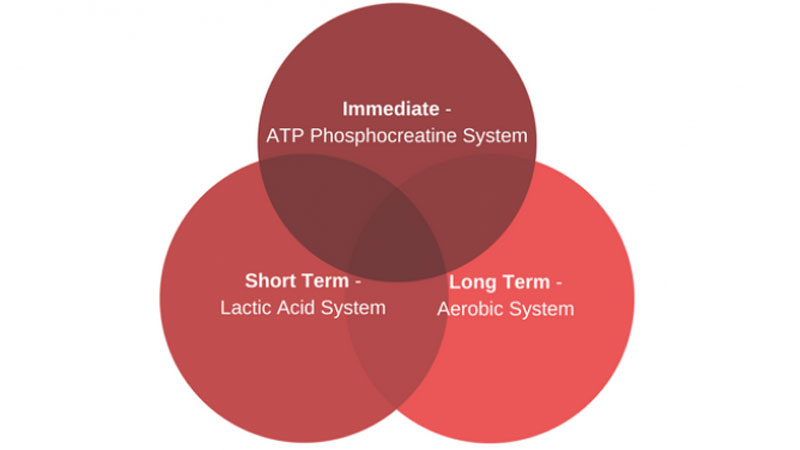
ATP use is directly related to exercise intensity
If you go for a gentle walk you’ll use a little more energy than when you’re just sitting around. And if you lift weights or hit the track for sprints you’ll deplete ATP stores quicker.
The 3 energy systems work either together or on their own to find that missing phosphate and slam it back into ADP to make more ATP.
The phosphocreatine system is fastest but doesn’t last long. Aerobic energy production yields most adenosine triphosphate… but it’s laborsome and slow.
If these systems can’t make enough ATP (to match the intensity of your workout) you hit a point of fatigue and have to slow down. But there’s never a point when you’re not generating at least some ATP from at least one of these systems.
[infobox]Key Point: The chemical reaction caused by phosphate hydrolysis causes energy which is used by your cells.
[/infobox]Do ATP Supplements Work?
Check the shelves of some supplement stores and you’ll see products labelled with “ATP” in the ingredients. And what a cool idea that is – pack a supplement full of pure energy and it’ll ramp up results in no time.
Won’t it?
Only there’s one kinda big problem…
They don’t work!
The way ATP works means you can’t orally dose it and expect it to work. According to one large review, supplements containing the compound have zero bioavailability.
A single dose of orally administered ATP is not bioavailable, and this may explain why several studies did not find ergogenic effects of oral ATP supplementation.
In fact, the only study that’s found any benefit to ATP supplementation was conducted on rats… and funded by a company that makes and sells those very supplements for financial gain.
Sounds a bit dodgy to us.
So how do you improve energy levels?
Keep things simple and stick to what works best:
- Exercise regularly
- A good, clean diet
- The right supplements to burn fat and boost workout productivity
These will optimize the way your body uses adenosine triphosphate.
The best way to ensure a bar-bending workout is to get motivated and train hard. Use a pre workout to supercharge your physical and mental performance and approach every training session with drive, focus and energy.
Check out our article on ‘What Pre Workout Should a Woman Take?‘ to get the very best product in your life.
[infobox]Key Point: Supplements claiming to boost adenosine triphosphate levels are a waste of money.
[/infobox]Summary – What Is ATP?
ATP is a nucleotide molecule stored in all cells and used for energy production. It’s the chemical that helps convert the calories in food into usable energy for muscle contraction and nerve transmission.
During exercise, you use more and more ATP for energy. Luckily, you have in-built systems that help you generate as much off the molecule as possible so you can work out harder, for longer.
While supplements claiming to contain adenosine triphosphate don’t work, a solid pre workout will give you the energy, focus and motivation to blast through fatigue and develop a leaner, more athletic figure.
